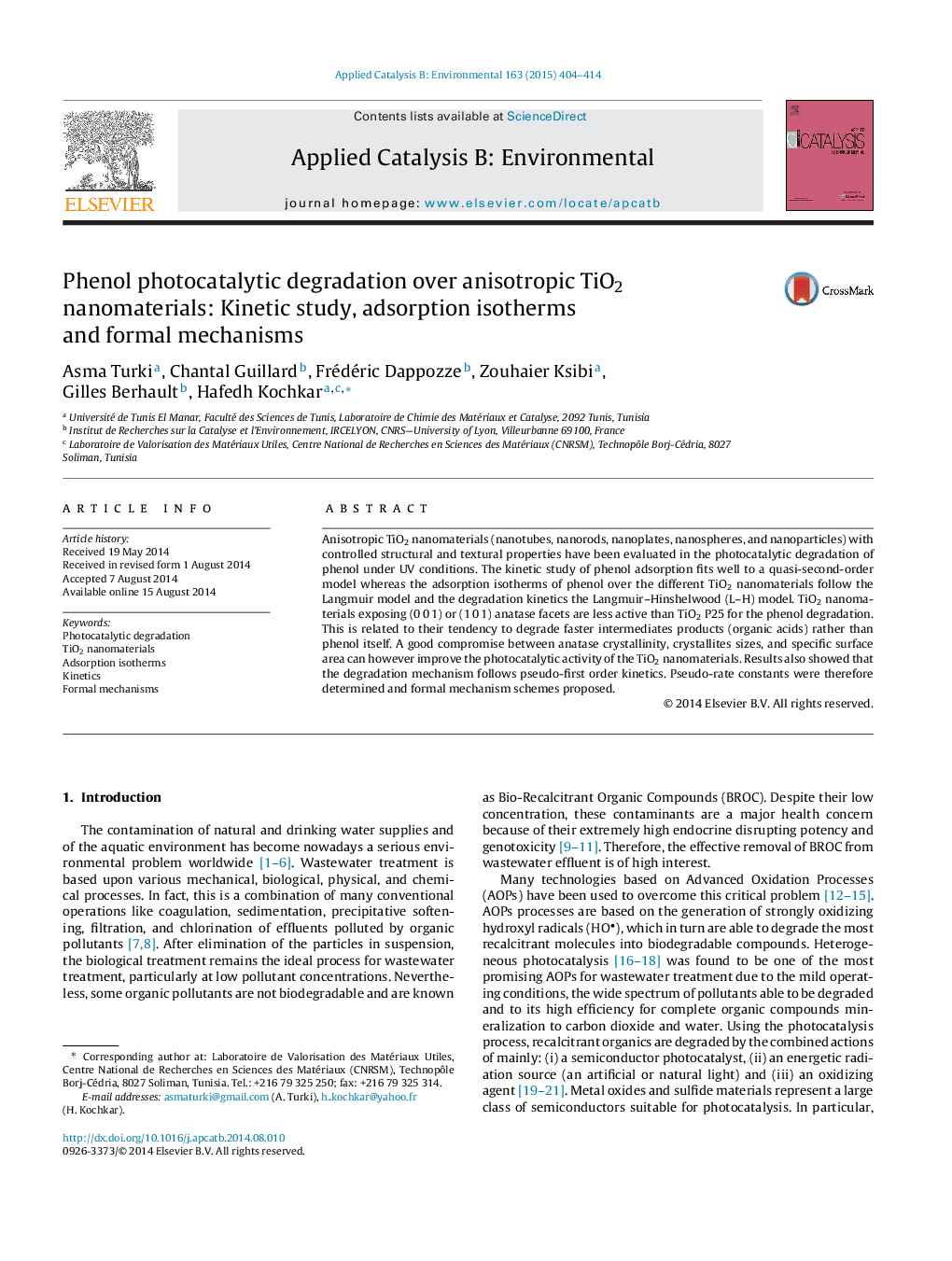| کد مقاله | کد نشریه | سال انتشار | مقاله انگلیسی | نسخه تمام متن |
|---|---|---|---|---|
| 44893 | 46375 | 2015 | 11 صفحه PDF | دانلود رایگان |

• TiO2 nanomaterials have been evaluated in the photodegradation of phenol.
• The phenol adsorption kinetics fitted well with Ho and Mckav model.
• The photocatalytic degradation kinetics is pseudo first order to phenol.
• A formal mechanism is discussed and results are successfully simulated.
• High photocatalytic activity is achieved at low surface coverage.
Anisotropic TiO2 nanomaterials (nanotubes, nanorods, nanoplates, nanospheres, and nanoparticles) with controlled structural and textural properties have been evaluated in the photocatalytic degradation of phenol under UV conditions. The kinetic study of phenol adsorption fits well to a quasi-second-order model whereas the adsorption isotherms of phenol over the different TiO2 nanomaterials follow the Langmuir model and the degradation kinetics the Langmuir–Hinshelwood (L–H) model. TiO2 nanomaterials exposing (0 0 1) or (1 0 1) anatase facets are less active than TiO2 P25 for the phenol degradation. This is related to their tendency to degrade faster intermediates products (organic acids) rather than phenol itself. A good compromise between anatase crystallinity, crystallites sizes, and specific surface area can however improve the photocatalytic activity of the TiO2 nanomaterials. Results also showed that the degradation mechanism follows pseudo-first order kinetics. Pseudo-rate constants were therefore determined and formal mechanism schemes proposed.
Figure optionsDownload as PowerPoint slide
Journal: Applied Catalysis B: Environmental - Volume 163, February 2015, Pages 404–414